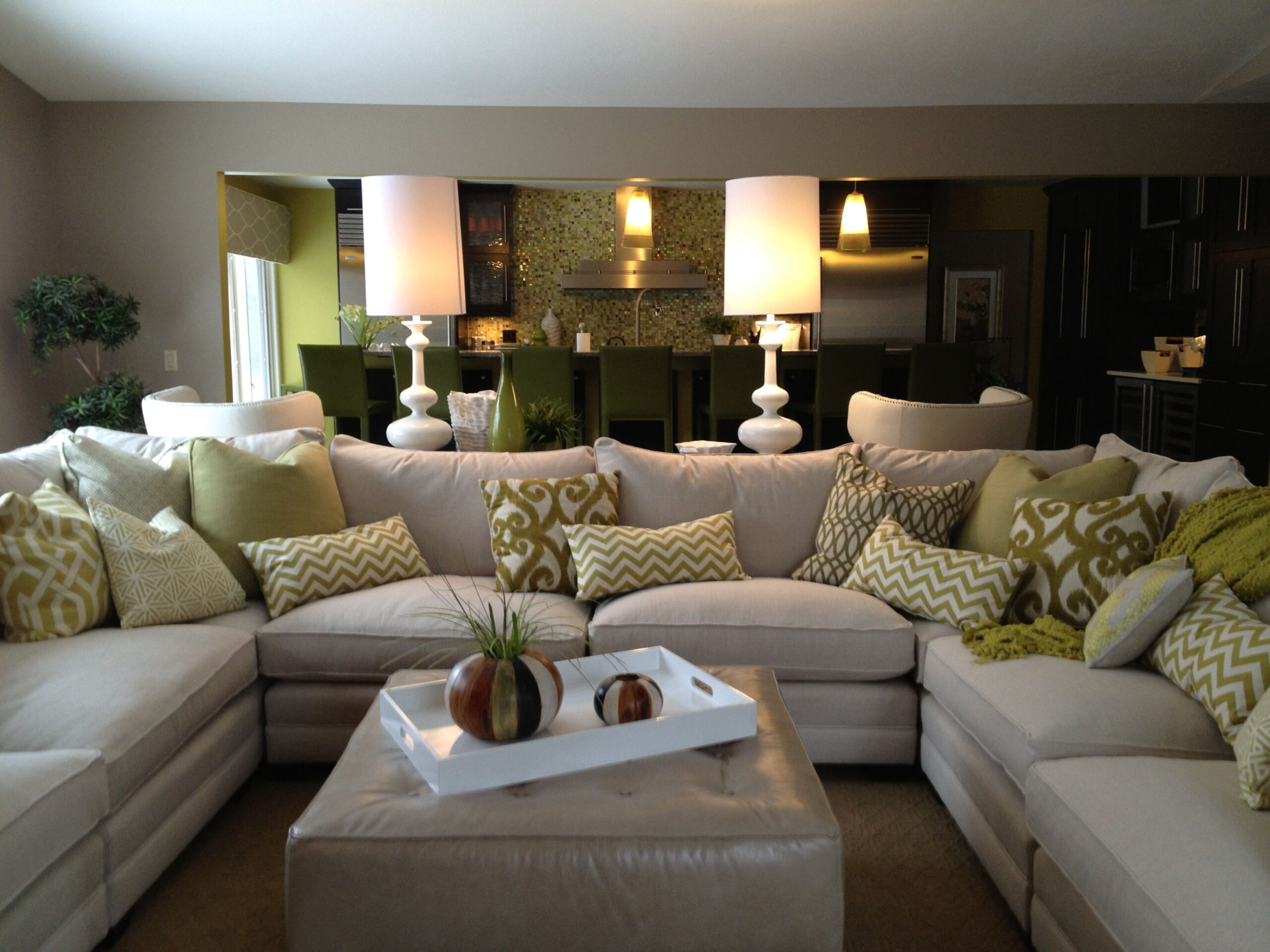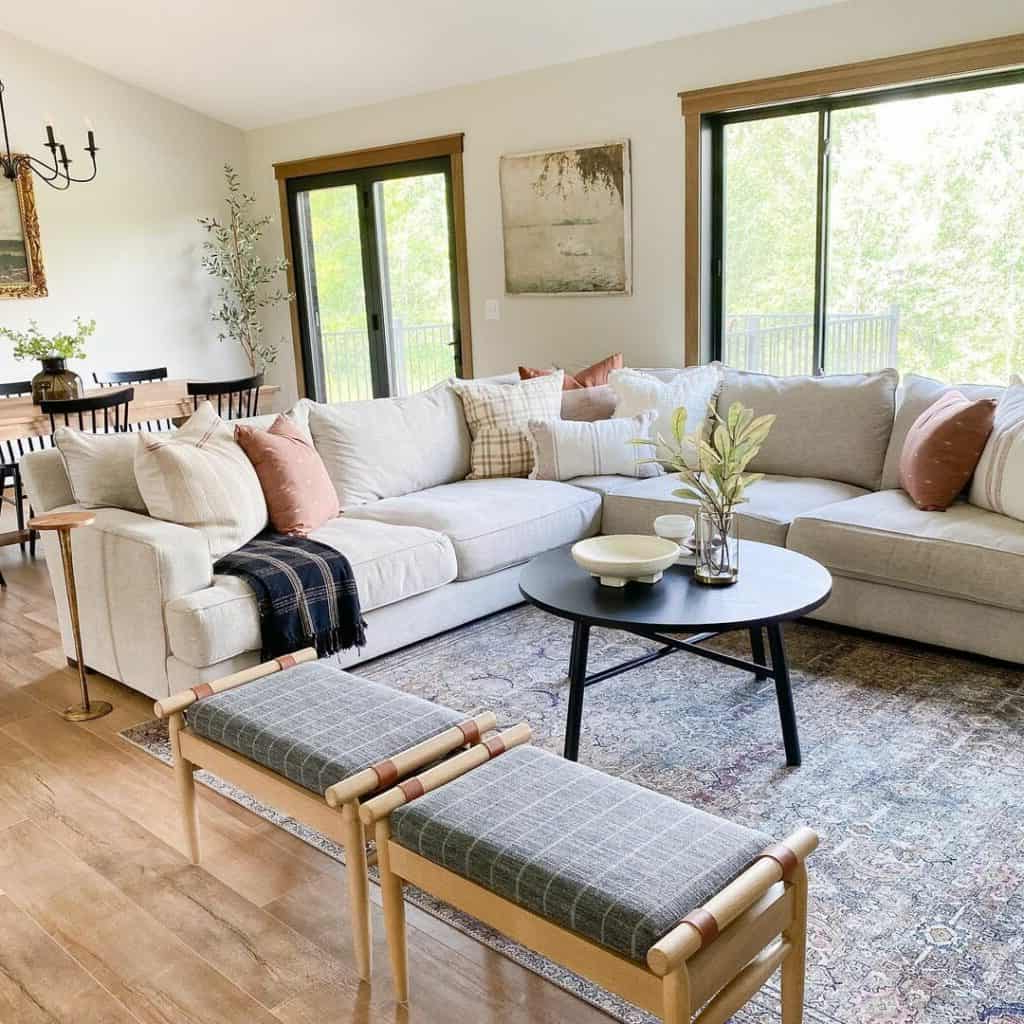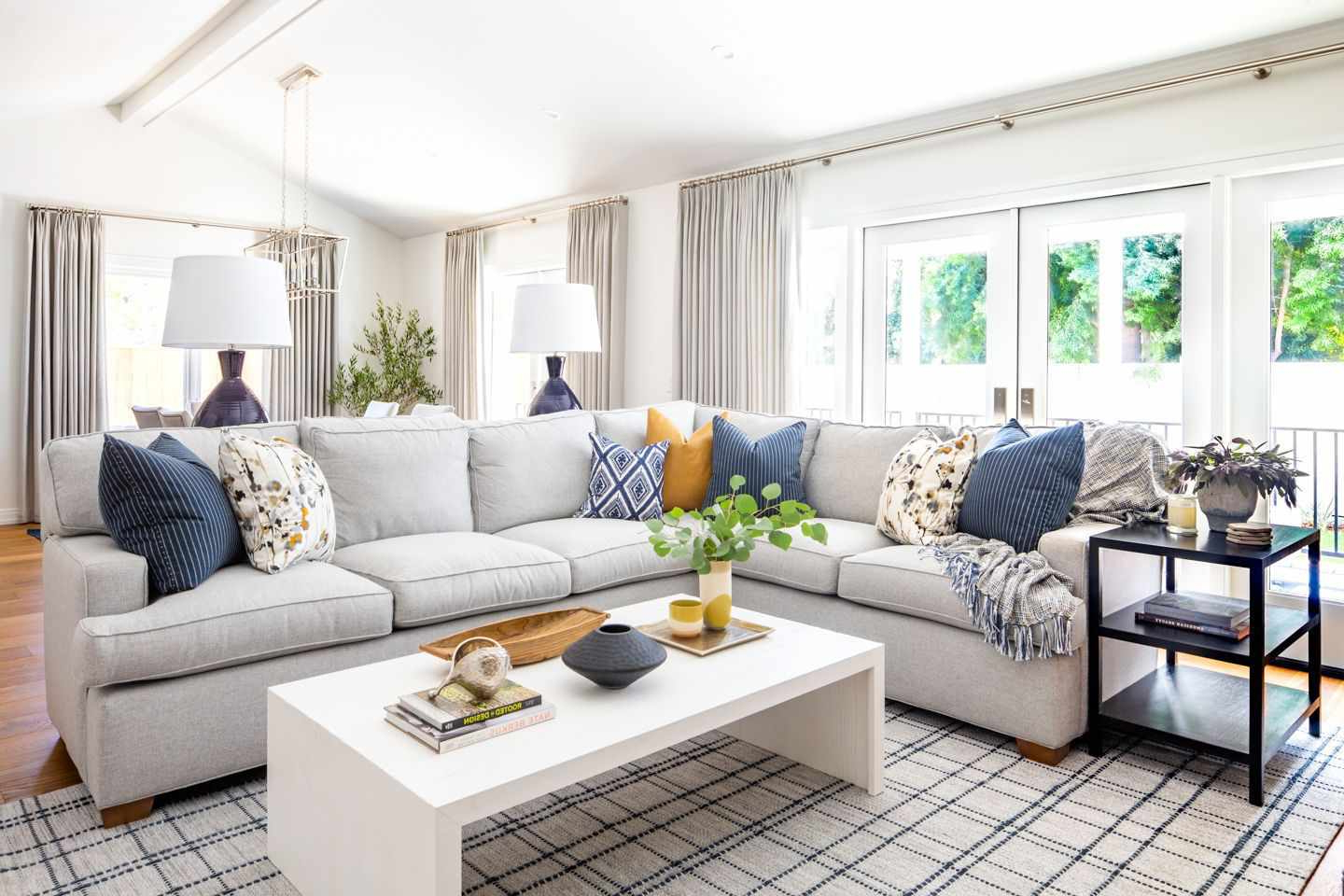When you think about it, the way we arrange our furniture says a lot about how we want to live. It’s not just about filling space – it’s about creating environments that feel right, comfortable, and naturally flowing. Sectionals, those versatile L-shaped or U-shaped seating solutions, can either make or break a room’s vibe. But what makes a sectional arrangement truly work? The secret lies in understanding proportion.
Sectionals have become the cornerstone of modern living rooms, offering comfort, conversation, and style all rolled into one. But here’s the thing – not every sectional fits every space perfectly. It’s easy to grab something because it looks good online, or because it matches your color scheme, but if the proportions aren’t right, you might end up with a room that feels off-kilter or awkward. That’s where the art of balancing proportions comes in. It’s less about rules and more about feeling, about making sure that every element works together like a well-choreographed dance.
Understanding Proportional Relationships
Proportion isn’t just about size – it’s about relationship. When you’re working with sectionals, you’re essentially creating a visual hierarchy within your space. Think of it this way: if your sectional is too large for the room, it can overwhelm everything else. If it’s too small, it can look lost and insignificant. The key is finding that sweet spot where your sectional feels like it belongs.
Consider the golden ratio – a mathematical concept that artists and designers have used for centuries. While you don’t need to measure everything with a ruler, thinking about how elements relate to each other helps create visual balance. For example, if your room is 12 feet wide, a sectional that takes up about 6 feet creates a pleasing relationship between empty and occupied space. This doesn’t mean you have to be exact, but rather that you should consider how much space your furniture actually needs to breathe.
A common mistake is choosing a sectional based purely on its appearance rather than its fit. Sometimes, a smaller, more carefully chosen piece will do more for your room than a massive one that simply looks impressive.
Room Size and Sectional Scale
Every room has its own personality, and that includes its scale. A sectional that works beautifully in a 20-foot living room might feel like it’s drowning in a 10-foot space. So how do you determine the right scale?
Start with the room dimensions. Measure the length and width of your space. Then, consider how much floor space you want to dedicate to seating. Generally speaking, a good rule of thumb is to allocate about 40-60% of your room’s total square footage for seating areas. This leaves plenty of room for movement and other furniture pieces.
For example, if you have a 15-foot by 12-foot room, that’s 180 square feet total. You’d want to reserve roughly 72-108 square feet for seating. A standard L-shaped sectional might take up around 60-80 square feet, which means you still have plenty of room for a coffee table, side tables, and even a small accent chair.
Don’t forget to account for traffic flow. You want enough space for people to move around comfortably. A general guideline is to leave at least 30 inches of clearance between furniture pieces and walls, and 18-24 inches between seating and other elements.
Visual Weight Distribution
In design, weight isn’t just physical – it’s visual. A large, heavy-looking sectional can dominate a room, while a lighter, more delicate piece might get lost. The trick is distributing visual weight evenly across your space.
Imagine your room as a canvas. If you place a heavy, dark sectional against a wall, it might feel like the whole room is leaning toward that side. Instead, try placing it slightly off-center, or pair it with lighter elements like a small side table or a light-colored throw. This creates a sense of balance that feels natural to the eye.
Another approach is to vary the visual weight of different furniture pieces. If you have a bold, statement sectional, balance it with simpler, more neutral items. Conversely, if you’re using a more understated piece, you can add visual interest with colorful accessories, textured throws, or even a striking lamp.
Think of it like a seesaw – if one side is too heavy, the whole thing tips. You want the visual weight to be evenly distributed so nothing feels lopsided or out of place.
Creating Conversational Flow
One of the biggest advantages of sectionals is their ability to encourage conversation. But to truly make them work for socializing, you need to consider how they influence the flow of interaction. A well-placed sectional should invite people to gather, not isolate them.
The classic L-shaped configuration is excellent for creating conversation zones. It naturally forms a circle of sorts, with people sitting around the corner or facing each other. The key is ensuring there’s enough space for people to move around and find comfortable seating positions.
For U-shaped sectionals, pay attention to the open side. This area should ideally be reserved for conversation, not clutter. You might want to place a small coffee table in the center, or perhaps a plant or artwork that draws attention inward. The goal is to make the seating area feel intentional and purposeful.
Consider how people will move through the space. Will they walk past the sectional to reach other areas of the room? If so, ensure there’s adequate clearance so they don’t feel cramped or blocked. Remember, furniture should enhance movement, not impede it.
Color and Texture Balance
Colors and textures play a huge role in how proportional a sectional feels within a space. If you’re working with a dark, richly colored sectional, you might want to balance it with lighter tones elsewhere in the room. This prevents the overall look from becoming too heavy or overwhelming.
Texture adds another dimension to the equation. A velvet sectional paired with a sleek, metallic coffee table creates contrast and visual interest. But if you go too far in either direction, it can become chaotic. The key is finding the right combination that feels cohesive.
Let’s say you have a large, neutral-toned sectional. You could add pops of color through accent chairs, cushions, or even artwork. Or perhaps you want to keep things more monochromatic and rely on texture variations instead. A wool rug under the sectional, a leather ottoman nearby, and some wooden side tables can create a layered look without being too busy.
It’s also important to consider how light affects colors and textures. A bright, sunlit room will make colors appear more vibrant, while a dimmer space might mute them. Adjust your choices accordingly to maintain the desired visual balance.
Practical Tips for Perfect Proportions
Here are some actionable strategies to help you achieve that perfect proportional balance:
• Measure everything before buying – This is non-negotiable. Even if you’re just browsing online, take measurements of your space first.
• Use the 60-30-10 rule – This classic design principle suggests using 60% dominant colors, 30% secondary colors, and 10% accent colors. Apply this to your sectional and surrounding elements.
• Test different layouts – Before committing, try moving your sectional around. Sometimes a few inches in either direction can make all the difference.
• Consider the room’s function – If you entertain frequently, you might want a larger sectional to accommodate more guests. If it’s primarily for quiet reading, a smaller, more intimate piece may work better.
• Don’t ignore the ceiling height – Tall ceilings allow for larger furniture, while low ceilings might require more careful consideration of scale. A very high ceiling can make a large sectional feel appropriately sized, whereas a low ceiling can make even a medium-sized piece seem imposing.
• Think about the furniture’s purpose – Is it meant for lounging, watching TV, or hosting guests? Different uses call for different arrangements and proportions.
Common Mistakes to Avoid
Even experienced designers sometimes fall into these traps:
• Ignoring traffic patterns – Placing a sectional directly in the path of foot traffic can make the room feel cluttered and uncomfortable.
• Choosing the wrong shape – Not all rooms suit every sectional shape. An L-shaped piece might work great in a large room but feel cramped in a narrow space.
• Overlooking the need for balance – If one side of your sectional is significantly heavier than the other, it can throw off the entire visual composition.
• Forgetting about proportion with accessories – Even small items like lamps or vases can affect the overall balance if they’re too large or too small relative to the sectional.
• Not accounting for the room’s existing furniture – If you already have a large sofa, adding a huge sectional can make the space feel overcrowded.
• Assuming bigger is always better – Sometimes, a smaller, more carefully selected piece will have more impact than a giant one that doesn’t quite fit.
Making It Work for Any Space
Whether you’re working with a sprawling open-concept space or a cozy corner, the principles of proportional balance remain the same. The key is adapting them to fit your specific situation.
In smaller spaces, opt for sectionals with clean lines and lighter colors. They’ll feel less bulky and more integrated with the room. You might even consider a modular sectional that allows you to adjust the shape and size as needed.
For larger rooms, you have more flexibility. You could choose a grand, statement-making sectional, or perhaps combine multiple smaller pieces to create a unique arrangement. The possibilities are endless.
The most important thing is to start with intention. Ask yourself: What do I want this space to feel like? What activities will happen here? Once you know the answers to these questions, choosing the right proportional balance becomes much easier.
Remember, design is personal. These guidelines are meant to help you think critically about your space, not to dictate what you must do. Trust your instincts, experiment, and most importantly, enjoy the process.
Balancing proportions when designing with sectionals is both an art and a science. It requires understanding not just the physical dimensions of your space, but also how those dimensions interact with your lifestyle and aesthetic preferences. The best sectionals are those that feel like they belong, that complement rather than compete with the rest of the room.
Whether you’re a seasoned designer or someone who just wants to make their living space feel more comfortable, remember that proportion is about creating harmony. It’s about making sure that every piece of furniture, every color, and every texture contributes to a unified whole. When done right, your sectional won’t just be furniture – it’ll be the heart of your space, drawing people in and making them want to stay.
The journey to perfect proportions starts with simple steps: measure carefully, visualize the relationships between elements, and trust your eye. With practice, you’ll develop an intuitive sense for what works, and your rooms will reflect your personal style while remaining functional and beautiful.















